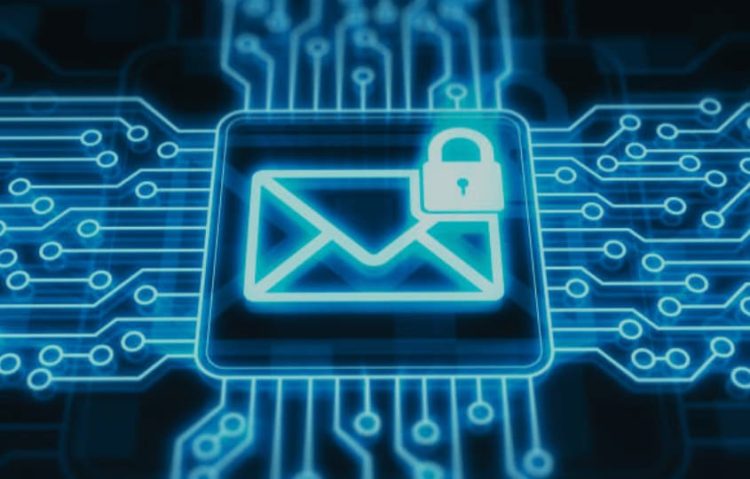In an era where digital communication is paramount, email security has never been more critical. As we step into 2024, email threats continue to evolve, making it essential for organizations to stay ahead of the curve. This detailed guide by MX Layer experts offers a deep dive into the current threat landscape. It covers the significance of strong authentication, the role of Secure Email Gateways (SEGs), and the importance of encryption and data protection.
We will delve into the significance of employee training and awareness, the need for regular software updates and patch management, and the importance of incident response and monitoring. We will also discuss regulatory compliance, emerging email threats, and cybersecurity trends and provide a detailed cybersecurity checklist.
In addition, we will explore anticipated email threats in 2024 and proactive measures to counter them, along with recommendations for strengthening email security in the coming year. Lastly, we will discuss the role of the MX Layer in email security. Join us as we navigate the world of email security, providing you with a comprehensive checklist to ensure your organization is prepared for 2024 and beyond.
Emerging and Anticipated Email Threats in 2024

Email has long been a favored avenue for cybercriminals due to its accessibility and the constant connectivity of email servers. In recent years, the landscape of email-based cyber threats has evolved, with three primary dangers standing out:
Phishing, a deceptive tactic to trick individuals into revealing sensitive information, witnessed a substantial surge in 2022 and 2023. Accounting for nearly a quarter of all spam emails, the prevalence of phishing has more than doubled from the previous year, underscoring its effectiveness as a top-tier risk for data breaches.
A significant player in the evolving threat landscape is Business Email Compromise (BEC), an insidious malware-less attack that relies on social engineering. This method deceives recipients into transferring funds, resulting in global losses exceeding $50 billion. BEC targets individuals within organizations who hold the keys to financial transactions, emphasizing the need for heightened awareness.
Cybercriminals often use email to deliver ransomware, taking advantage of the trust people have in email communication. By exploiting this trust, hackers add an extra layer of risk to an already harmful type of malware. The ease of spreading ransomware through email underscores the critical importance of robust security measures.
In both 2022 and 2023, MX Layer, our leading enterprise security company, has exhibited remarkable effectiveness in safeguarding organizations against cyber threats.
In 2024, the cyber threat landscape evolves with AI-powered attacks, posing a severe threat to enterprise security. Cybercriminals leverage AI and large language models, amplifying social engineering attacks’ scale. Loaders, stealers, and Remote Access Trojans (RATs) are anticipated to dominate malware, while QR code phishing, or ‘Quishing,’ emerges as a significant threat.
This year highlights the nefarious potential of AI-powered cyber attacks, as cybercriminals exploit advanced AI capabilities for sophisticated and deceptive strategies. To counter these evolving threats, organizations must embrace AI-driven security technologies, robust architectures, and cryptographic solutions resilient to emerging technologies. In this context, we explore strategies to navigate the dynamic landscape of AI-powered cyber threats in 2024. Within this context, we will explore the nuances of the subject at hand.
1. Internal Systems Impersonation
Cybercriminals leveraging AI for executive impersonation pose a substantial threat to enterprise security. Organizations must implement stringent identity verification processes and adopt a zero-trust framework, assuming no user or device is inherently trustworthy. A startling 82% of data breaches in 2022 involved the human element, pointing to the critical role that end users play in the overall security strategy. It underscores the importance of addressing internal system impersonation through stringent identity verification processes and a zero-trust framework.
2. Payloadless Malware
Loaders, stealers, and RATs are anticipated to dominate the malware landscape in 2024. Combatting this threat requires implementing AI-powered threat detection and response systems, along with enhancing authentication methods to prevent unauthorized installations. A concerning statistic reveals that 94% of malware is delivered through email. Hackers launch an average of 26,000 attacks every day, equivalent to an attack every three seconds, emphasizing the relentless nature of these threats. It highlights the need for AI-powered threat detection and response systems to combat payloadless malware.
3. QR Code Phishing (“Quishing”)
The emergence of QR code phishing, or ‘Quishing,’ presents a significant threat. Proactive measures include utilizing advanced phishing protection techniques to detect and block phishing attempts involving manipulated QR codes. Additionally, implementing cloud-based security solutions for real-time threat intelligence and response is crucial.
4. Vendor Email Compromise (VEC)
Vendor Email Compromise (VEC) attacks have seen a substantial increase, particularly in the financial services industry. Mitigating these socially engineered attacks involves providing regular email security training for employees and adhering to data protection regulations to safeguard sensitive information. Financial institutions found themselves at the forefront of phishing attacks, representing a substantial 48% of phishing emails.
5. AI-Generated Attacks
The utilization of AI and large language models by cybercriminals enhances the scale of social engineering attacks. Mitigating AI-generated attacks requires adopting a zero-trust approach for email security and implementing advanced authentication methods to prevent unauthorized access.
6. Deceptive Sophistication
The rise of Artificial Intelligence has elevated the sophistication of cyber-attacks, facilitating the analysis of vast datasets for creating tailored and convincing phishing campaigns. This deceptive sophistication makes it challenging for users to discern malicious intent.
7. Increased Volume and Impact
AI’s adaptability allows hackers to craft attacks that constantly evolve, staying one step ahead of traditional security measures. The dynamic nature of AI makes detecting previously unseen attack patterns a crucial challenge for cybersecurity professionals.
8. Advanced Phishing Techniques
Cybercriminals are now harnessing Generative AI (GenAI) to elevate deception. GenAI enables the creation of authentic-looking lure documents, eliminating linguistic flaws that often expose phishing attempts. This development heightens the risk for businesses and individuals who may fall victim to these more convincing and difficult-to-spot phishing campaigns.
9. Business Email Compromise (BEC)
Business Email Compromise involves attackers impersonating known entities to manipulate victims into divulging sensitive information. BEC attacks have become more targeted and refined, often exploiting personal relationships and knowledge of organizational hierarchies. The construction and eCommerce sectors each accounted for 17% of the phishing pie, revealing the diverse targets of cybercriminals and the need for sector-specific defenses.
MX Layer provides advanced cloud-based email security solutions that address the critical issues highlighted above.
Proactive Measures to Mitigate Email Threats in 2024
As organizations gear up to face evolving email threats in 2024, a multifaceted approach is essential to ensure robust cybersecurity. Anticipated email threats include challenges such as internal systems impersonation, payloadless malware, QR code phishing, vendor email compromise (VEC), and AI-generated attacks. To counter these threats effectively, the integration of advanced security technologies is imperative.
- Internal Systems Impersonation Defense: Strict identity verification processes are essential to counter the threat of internal systems impersonation, preventing unauthorized access and activities.
- AI-Powered Defense: Combatting payloadless malware involves leveraging AI-powered threat detection and enhancing authentication methods to detect and respond to potential threats in real time.
- Advanced Protection for QR Code Phishing: Addressing QR code phishing threats requires advanced protection techniques and the implementation of cloud-based solutions for rapid threat intelligence and response.
- Email Security and Compliance for Vendor Email Compromise (VEC): To mitigate the risk of VEC attacks, organizations should prioritize email security training for employees and ensure regulatory compliance to safeguard sensitive information.
- Zero-Trust Defense Against AI-Generated Attacks: Countering AI-generated attacks involves adopting a zero-trust approach for email security, implementing advanced authentication methods, and staying vigilant against unauthorized access.
Leveraging Cutting-Edge Solutions
Organizations can turn to advanced security technologies to combat these emerging threats effectively. In 2024, MX Layer’s cutting-edge solutions are at the forefront of the battle against cyber threats, including:
- AI and Machine Learning:
Leveraging AI for automated responses and predictive analytics to identify anomalies and deviations, enabling a proactive defense mechanism.
- Zero Trust Architecture:
Embracing the Zero-Trust Architecture model, which assumes any user or device could pose a potential threat, regardless of their location within or outside the network.
- Quantum-Safe Cryptography:
Addressing the evolving landscape of quantum computing by implementing cryptography resilient to quantum attacks.
- Secure Access Service Edge (SASE):
Adopting a comprehensive network architecture that combines wide-area networking and network security services into a single cloud-based service.
- Extended Detection and Response (XDR):
Integrating XDR as a powerful security incident detection and response tool by combining multiple security products into a cohesive system.
Email Security Checklist for 2024
MX Layer brings a wealth of expertise to the forefront, leveraging cutting-edge technologies and a deep understanding of emerging threats. With a commitment to excellence, we aim to empower organizations to fortify their defenses and proactively mitigate potential risks associated with email security.
This cybersecurity checklist is designed to serve as a strategic guide, helping organizations prioritize and implement key controls that are instrumental in maintaining a resilient email security infrastructure.
| # | Control Description | Implementation Steps |
| 1 | Framework-Based Risk Assessment | Evaluate the organization’s risk profile using established cybersecurity frameworks. |
| 2 | Identify Emerging Threats | Stay informed about the latest threats and adjust security measures accordingly. |
| 3 | Implement Comprehensive Security Measures | Use a multi-layered approach to security against both common and emerging threats. |
| 4 | Zero Trust and Identity Management | Implement a zero-trust model and manage user identities to prevent unauthorized access. |
| 5 | Continuous Awareness Training | Regularly train employees on the latest threats and how to recognize them. |
| 6 | Vendor and Third-Party Management | Ensure third-party vendors follow appropriate security practices. |
| 7 | Budgeting and Resource Allocation | Allocate sufficient resources to maintain and improve the organization’s cybersecurity posture. |
| 8 | Incident Response and Recovery Planning | Have a plan in place to respond to and recover from security incidents. |
| 9 | Enable SPF (Sender Policy Framework) | Publish DNS records to verify if an email is from an authorized server for a specific domain. |
| 10 | Enable DKIM (DomainKeys Identified Mail) | Add an encrypted signature on every message, validated by a remote server against a DNS TXT record. |
| 11 | Enable DMARC (Domain-based Message Authentication) | Build on SPF and DKIM to verify sender domains, enhancing email authentication and protection. |
| 12 | Two Factor Authentication | Implement two-factor authentication to add an extra layer of security |
| 13 | Email Proof Protection | Utilize email proof protection measures to verify and secure email authenticity. |
| 14 | Spam Filtering | Implement spam filtering to reduce the risk of malicious emails. |
| 15 | Security Audits | Conduct regular security audits to identify and address vulnerabilities. |
| 16 | Use Unique Passwords for Different Accounts | Encourage users to use unique passwords for various accounts. |
| 17 | Be Wary of Attachments | Educate users to be cautious of email attachments, especially from unknown sources. |
| 18 | Enable DNSSEC | Implement DNS Security Extensions (DNSSEC) for enhanced DNS security. |
| 19 | Create Strong Passwords | Promote the use of strong, complex passwords for user accounts. |
| 20 | Mail Access Restriction | Restrict mail access to authorized personnel only. |
| 21 | Backup Data | Regularly backup email and critical data to prevent data loss. |
| 22 | Encrypt Email | Implement email encryption to protect sensitive information in transit. |
| 23 | Send Securely | Use secure channels and protocols when sending sensitive information. |
| 24 | View Email Messages Individually | Avoid preview panes and view email messages individually to minimize risks. |
| 25 | Change Passwords | Enforce periodic password changes for enhanced security. |
| 26 | Install Free Antivirus Software | Deploy reliable antivirus software to detect and prevent malware. |
| 27 | Attachment Restrictions | Implement restrictions on the types and sizes of email attachments. |
| 28 | Password Policy | Establish and enforce a robust password policy. |
| 29 | Mail Monitoring | Regularly monitor email traffic for suspicious activities. |
| 30 | Throttling Policy | Implement throttling policies to prevent abuse and suspicious behavior. |
| 31 | Avoid Untrustworthy Downloads | Discourage users from downloading files from untrustworthy sources. |
| 32 | Keep the Operating System Updated | Ensure that the operating system is regularly updated with the latest security patches. |
Recommendations for Strengthening Email Security in 2024

The Power of Multi-Factor Authentication and Password Best Practices
Email, being a primary communication channel, is a prime target for cyber threats. In this discussion, we’ll explore the significance of Multi-Factor Authentication (MFA) and delve into the best practices for creating and maintaining secure passwords.
Multi-Factor Authentication
The importance of MFA lies in its ability to mitigate the risks associated with stolen or weak passwords. In the past, a compromised password could lead to data breaches or fraudulent activities. MFA acts as a deterrent to common cyber threats, such as brute force attacks and phishing attempts. Even if one authentication factor is compromised, the additional layers make it exceedingly difficult for unauthorized access.
Unlike the traditional reliance on static usernames and passwords, MFA introduces an additional layer of security by requiring two or more authentication factors. MFA may involve what you know (password), what you have (security token or smartphone), or what you are (biometric data).
Password Best Practices
MFA acts as a resilient barrier, making unauthorized access a formidable challenge. Meanwhile, password best practices ensure that the first line of defense remains strong and resistant to common cyber threats.
The following guidelines encompass the best practices for creating and maintaining secure passwords:
- Resisting common Attacks: Users should enter passwords on known and trusted devices with robust malware detection. The choice of password, including its length and uniqueness, plays a crucial role in resisting common attacks.
- Containing Successful Attacks: Limiting exposure to a specific service and preventing potential damage are vital components of containing successful hacker attacks.
- Understanding Human Nature: Acknowledging human tendencies is essential in creating password policies that users will adhere to. Research indicates that overly restrictive rules can result in weaker password quality. Striking a balance between security and user convenience is key.
Guidelines for Creating Strong, Unique Passwords:
- Maintain an 8-character minimum length requirement.
- Avoid character composition requirements like *& (^%$.
- Eliminate mandatory periodic password resets for user accounts.
- Ban common passwords to fortify the system against vulnerabilities.
- Use different passwords for different systems and accounts.
- Develop mnemonics to remember complex passwords.
- Consider utilizing a password manager program for secure password management.
MX Layer, a prominent email security platform, provides advanced cloud-based email security solutions. Our comprehensive platform defends against spam, phishing, and malware, controlling inbound and outbound email traffic. With features like filtering, threat protection, and data leak prevention, MX Layer ensures the constant safeguarding of critical communications. Businesses using MX Layer can confidently focus on growth, trusting the platform to handle their email security needs.
Secure Email Gateways (SEGs)
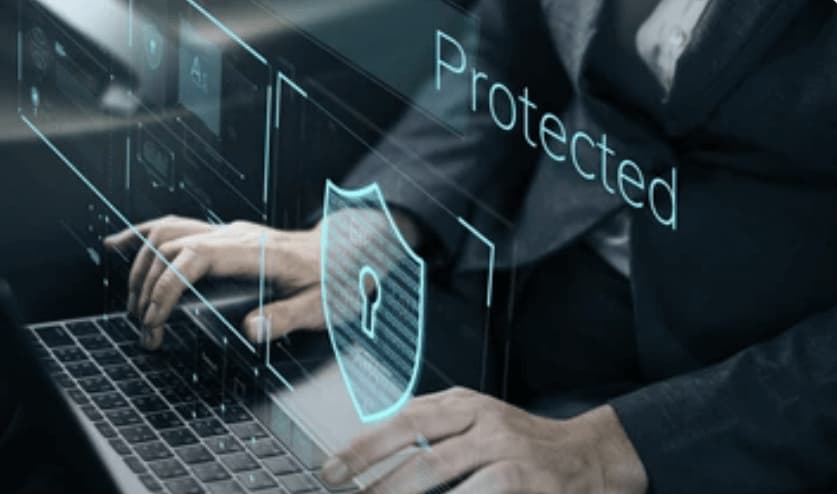
Email attacks, particularly phishing, remain among the most prevalent cyber threats faced by organizations today. SEGs function similarly to secure web gateways but focus specifically on scrutinizing email traffic. Their primary objective is to detect and prevent malicious content, including phishing attempts, ransomware, Business Email Compromise (BEC), trojans, and malware, from reaching the inboxes of recipients.
SEGs provide pre-delivery protection by intercepting and blocking email-based threats before they even reach the mail server.
Choosing the Right SEG
Here are key considerations when evaluating SEG solutions:
- Scanning Capabilities
Look for SEGs with the ability to scan emails in real-time, swiftly identifying and blocking potential threats before they reach users.
- Defense Against Multiple Threats
A potent SEG should offer defense against a spectrum of threats, including phishing attacks, malware, and malicious links. It should serve as a comprehensive shield for your email infrastructure.
- Advanced Threat Identification
Incorporate SEGs equipped with advanced AI technology. AI enables the system to continually evolve and adapt to emerging threat delivery methods, ensuring heightened accuracy in threat identification.
- Deployment Options
SEGs can be deployed either on-premises or in the cloud. Consider the email infrastructure in use—cloud-based services like Microsoft Office 365 or on-premises servers like Exchange—and choose a deployment model that aligns with your organizational needs.
- Customization and Compliance
Recognize that different organizations have unique cybersecurity requirements. A reliable SEG should provide flexibility for customization, allowing the creation of filters and rules that align with internal policies and adhere to local and industry regulations.
MX Layer offers a Secure Email Gateway and Integrated Cloud Email Security solutions that provide unparalleled detection capabilities powered by a combination of MX Layer and third-party engines, constantly updated threat intelligence, and state-of-the-art AI and machine learning.
Encryption and Data Protection in Email Security
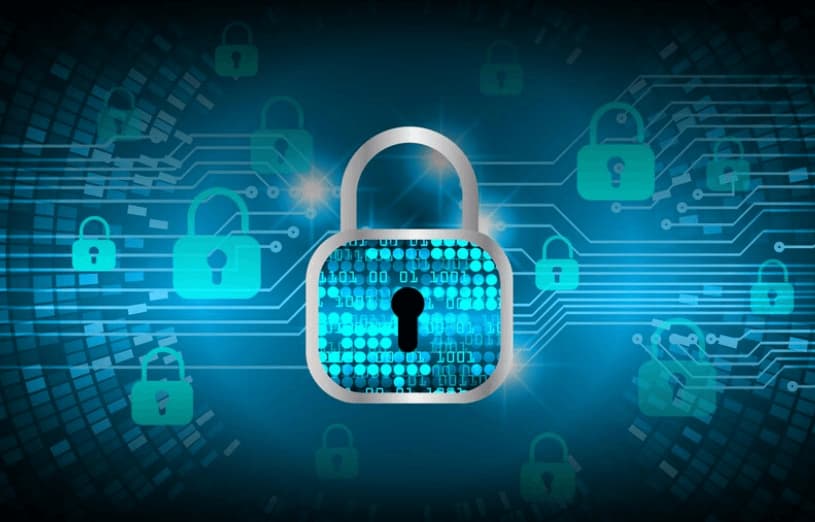
Two key components in achieving robust email security are End-to-End Encryption (E2EE) and Data Loss Prevention (DLP):
End-to-End Encryption
E2EE stands as a formidable method of secure communication that shields data from prying eyes during transit. The essence lies in encrypting data on the sender’s system or device in a way that only the intended recipient possesses the decryption key. The benefits of E2EE are multifaceted:
- Increased Privacy and Security: E2EE ensures that only the sender and the designated recipient have access to the contents of the communication.
- Complete Control: With E2EE, the sender retains full control over the information flow. Regardless of the data’s trajectory, the data owner can dynamically adjust controls, revoke access, or restrict sharing, ensuring a dynamic and adaptable security model.
- Protects Free Speech: E2EE safeguards free speech and protects individuals facing oppression. E2EE empowers users to express themselves without fear of unwarranted surveillance by creating a secure communication channel.
- Great Flexibility: The flexibility inherent in E2EE is noteworthy. It allows for secure communication across diverse platforms and devices, making it a versatile solution for organizations with varying communication needs.
Data Leak Prevention
Data Leak Prevention is a comprehensive set of strategies, tools, and processes designed to prevent unauthorized access, sharing, loss, leakage, theft, or destruction of sensitive information. The implementation of a strong DLP strategy involves several key steps:
- Identify and Classify Sensitive Data: The first step in DLP is to identify and classify critical data. These are the pieces of information that, if compromised, could significantly harm the organization. Knowing what data is sensitive is fundamental to crafting an effective DLP policy.
- Implement DLP Policies: Crafting and enforcing DLP policies is crucial in dictating how sensitive data should be handled, shared, and stored. These policies are the backbone of the organization’s defense against data breaches.
- Monitor and Audit: Regular monitoring and auditing of data access and usage are integral to the effectiveness of DLP. This proactive approach ensures that any unauthorized activity is detected promptly, allowing for swift remediation.
Employee Training and Awareness in Email Security

Among the various strategies employed, phishing and social engineering attacks pose significant threats. Acknowledging the crucial role employees play in defending against threats, organizations are prioritizing extensive training and awareness programs.
Phishing Attacks
Cybercriminals persist in using phishing attacks to compromise organizational security. Recognizing the signs of a phishing email is imperative in thwarting these attempts. Regular training sessions are conducted to educate employees on identifying and avoiding phishing attempts. These sessions delve into the pretexts and techniques currently popular among attackers, equipping employees with the knowledge needed to reduce the probability of falling victim to such schemes.
Typically, phishing awareness training involves immersive experiences, such as virtual training courses comprising scenario-based videos and quizzes. This approach educates employees on the nuances of phishing attempts and ensures a practical understanding of the risks associated with clicking on malicious links or opening suspicious attachments.
Social Engineering Attacks
Social engineering attacks add another layer of complexity to email security, leveraging human interaction and psychological manipulation. In these attacks, cybercriminals exploit human psychology and curiosity, often masquerading as trusted entities to trick users into divulging sensitive information. Recognizing the unpredictable nature of the human element in cybersecurity, organizations prioritize educating employees on mitigating social engineering tactics.
Addressing social engineering in training programs involves highlighting the importance of human vigilance and skepticism. By understanding the tactics employed by attackers, employees can better safeguard against deceptive maneuvers that aim to compromise vital information, such as passwords.
Employee training and awareness programs are vital for bolstering corporate security. Effective security awareness training instills proper cyber hygiene, enabling employees to recognize the security risks associated with their actions, especially in the realm of email security. By fostering a culture of cybersecurity awareness, organizations cultivate a vigilant workforce capable of resisting phishing and social engineering attacks encountered through email and the web.
Incident Response and Monitoring in Email Security
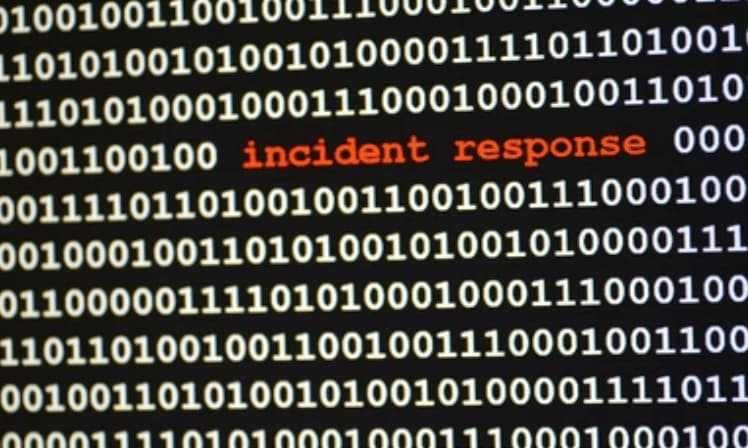
Modern businesses rely on emails as their lifeblood, emphasizing the crucial role of robust incident response plans and vigilant monitoring. This journey begins with a strategic approach, weaving incident response plans and continuous monitoring into the very fabric of email security. In this exploration, we delve into the steps of crafting effective incident response plans and the dynamic strategies of continuous monitoring.
Establishing Incident Response Plans
- Preparation
The foundation of a strong incident response plan lies in thorough preparation. Organizations must develop a comprehensive understanding of potential cyber threats specific to email security. The preparation step involves identifying common attack vectors, such as phishing and malware, and establishing protocols for responding to these threats.
- Detection and Analysis
Detection is a critical phase in incident response, and Security Information and Event Management (SIEM) systems play a pivotal role. These systems analyze vast amounts of data to detect anomalies and potential threats in real time. In the context of email security, SIEM systems can identify suspicious patterns in email traffic, allowing organizations to respond promptly to potential breaches.
- Containment, Eradication, and Recovery
Upon identifying a threat, it becomes crucial to take swift action. IT and cybersecurity teams must coordinate efforts to isolate infected systems, remove the threat, and recover compromised systems. Effectively neutralizing the threat and restoring systems to normal operation are essential steps in minimizing the impact of email security incidents during this phase.
- Post-Incident Activity
Learning from incidents is vital for preventing future breaches. Organizations should conduct post-incident analyses to understand the root causes of the incident and identify areas for improvement. Continuous improvement based on lessons learned is key to reducing the risk of similar breaches in the future.
Continuous Monitoring
Continuous monitoring is a proactive approach that involves real-time scrutiny of IT systems and networks. From employee training to leveraging advanced technologies, let’s explore the straightforward effectiveness of continuous monitoring:
- Employee Training
Empower employees as the first line of defense against email threats through regular training programs. Educated employees add an extra layer of security, enhancing the organization’s email infrastructure resilience.
- Advanced Threat Detection
Utilize machine learning and AI tools to enhance the organization’s ability to detect abnormal behavior or anomalies in email traffic. Stay ahead of sophisticated email threats that traditional security measures might overlook.
- Implementation of DMARC, DKIM, and SPF
Deploy crucial email authentication methods, such as DMARC, DKIM, and SPF, to prevent email spoofing. These measures make it challenging for attackers to impersonate the organization’s domain, providing an extra layer of protection to email communications.
- Regular System Audits
Conduct frequent audits of the email system to identify and address vulnerabilities. Proactively address weaknesses in security configurations, outdated software, or overlooked settings to strengthen defenses against potential threats.
Regulatory Compliance
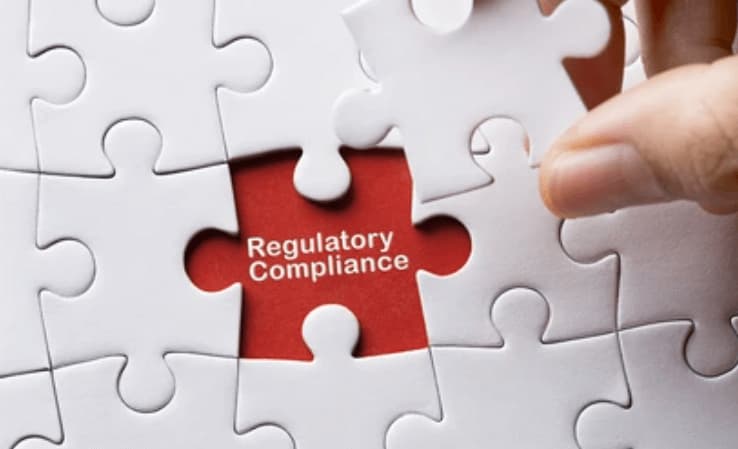
Ensuring email security follows regulations is crucial to protect sensitive information’s confidentiality, integrity, and privacy. Various industries are subject to distinct data protection regulations, and adherence to these standards is crucial for maintaining trust and avoiding legal repercussions. Here, we delve into key compliance requirements and guide aligning email security practices with regulatory standards.
Compliance Requirements
General Data Protection Regulation (GDPR): GDPR, which applies in the European Union, is all about protecting the personal data of individuals and their privacy.
Health Insurance Portability and Accountability Act (HIPAA): Relevant in the United States, HIPAA mandates the protection of healthcare-related information.
California Consumer Privacy Act (CCPA), Hong Kong Personal Data (Privacy) Ordinance (HRPA), and Payment Card Industry Data Security Standard (PCI DSS): These regulations add further layers of compliance requirements, catering to specific industries and regions.
The Role of MX Layer in Email Security

The MX Layer plays a pivotal role in bolstering email security through a multifaceted approach, encompassing various features that collectively safeguard against a range of cyber threats.
- Inbound Email Filtering: MX Layer acts as a robust defense mechanism against a variety of threats, including spam, viruses, and phishing attacks, during the inbound transmission of emails.
- Outbound Email Filtering: By preventing outbound spam and mitigating IP blocking, MX Layer enhances email delivery and continuity for organizations, ensuring a seamless communication experience.
- Antivirus / Antispam: Leveraging multiple third-party vendor-acquired signatures, MX Layer provides a global perspective on current threats, offering an advanced shield against evolving cybersecurity risks.
- Content Scanning: MX Layer facilitates the creation of customized filters for both inbound and outbound emails, allowing organizations to tailor their security protocols to specific requirements.
- Attachment Filtering: Through the identification and filtration of specific file types based on their extensions and MIME types, MX Layer adds an extra layer of security by preventing malicious attachments from infiltrating the email system.
- Data Leak Prevention: MX Layer is equipped with the capability to identify and prevent the leakage of sensitive data, ensuring the confidentiality and integrity of critical information.
- URL Scanning: The platform meticulously scans and inspects all URLs within emails, detecting and neutralizing links leading to potentially malicious websites, thereby fortifying against cyber threats.
- Zero-Hour Attack Protection: MX Layer provides ultimate protection against zero-day threats, offering a proactive defense mechanism to counter emerging and previously unknown vulnerabilities.
These features synergistically work together, providing a comprehensive email security solution. MX Layer’s cloud-based platform is engineered for seamless integration with any email server, ensuring unparalleled compatibility and flexibility. Its deployment is user-friendly, eliminating the need for additional hardware or software installations. These features make MX Layer an ideal choice for businesses of all sizes, from small enterprises to large corporations, as well as IT service providers, offering tailored solutions to meet diverse and unique security requirements.
Additionally, MX Layer extends a risk-free experience to potential users through its Free Trial, allowing organizations to explore its capabilities before making a commitment. Moreover, the platform boasts a dedicated customer support system, ensuring that users have access to assistance and guidance whenever needed,


